Filter by
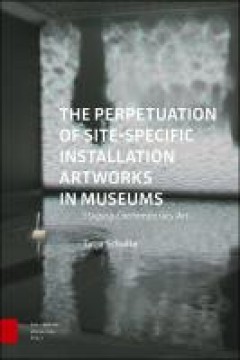
The perpetuation of site-specific installation artworks in museums : staging …
Site-specific installations are created for specific locations and are usually intended as temporary artworks. The Perpetuation of Site-Specific Installation Artworks in Museums: Staging Contemporary Art shows that these artworks consist of more than a singular manifestation and that their lifespan is often extended. In this book, Tatja Scholte offers an in-depth account of the artistic product…
- Edition
- -
- ISBN/ISSN
- 9789048554546
- Collation
- 267 p.
- Series Title
- -
- Call Number
- 709.0407 SCH p
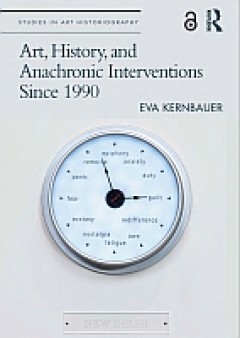
Art, history, and anachronic interventions since 1990
This book examines contemporary artistic practices since 1990 that engage with, depict, and conceptualize history. Examining artworks by Kader Attia, Yael Bartana, Zarina Bhimji, Michael Blum, Matthew Buckingham, Tacita Dean, Harun Farocki and Andrei Ujica, Omer Fast, Andrea Geyer, Liam Gillick and Philippe Parreno, Hiwa K, Amar Kanwar, Bouchra Khalili, Deimantas Narkevičius, Wendelien van Old…
- Edition
- -
- ISBN/ISSN
- 9781003166412
- Collation
- 260 p.: colour, ill.
- Series Title
- -
- Call Number
- 709 KER a

Some ways of making nothing : apophatic apparatuses in contemporary art
"What if all works of art were better understood as functioning apparatuses, entangling their human audiences in experiences of becoming? What if certain works of art were even able to throw the brakes on becoming altogether, making nothings rather than somethings? What would be the ethical value of making nothing, of stalling becoming; and how might such nothings even be made? Some Ways of Mak…
- Edition
- -
- ISBN/ISSN
- 9781953035387
- Collation
- xiii, 441 p.
- Series Title
- -
- Call Number
- 701 CLO s
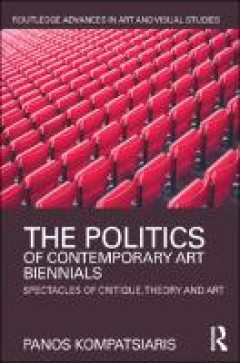
The politics of contemporary art biennials: spectacles of critique, theory an…
Contemporary art biennials are sites of prestige, innovation and experimentation, where the category of art is meant to be in perpetual motion, rearranged and redefined, opening itself to the world and its contradictions. They are sites of a seemingly peaceful cohabitation between the elitist and the popular, where the likes of Jeff Koons encounter the likes of Guy Debord, where Angela Davis an…
- Edition
- -
- ISBN/ISSN
- 9781315645049
- Collation
- 206 p.: black and white, ill.
- Series Title
- Routledge advances in art and visual studies
- Call Number
- 701.03 KOM t
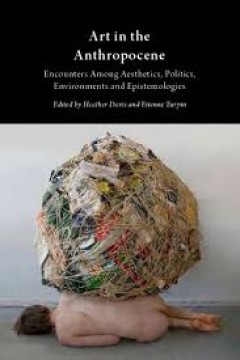
Art in the Anthropocene: Encounters Among Aesthetics, Politics, Environments …
Taking as its premise that the proposed geologic epoch of the Anthropocene is necessarily an aesthetic event, this book explores the relationship between contemporary art and knowledge production in an era of ecological crisis, with contributions from artists, curators, theorists and activists. Contributors include Amy Balkin, Ursula Biemann, Amanda Boetzkes, Lindsay Bremner, Joshua Clover & Ju…
- Edition
- -
- ISBN/ISSN
- 9781785420177
- Collation
- -
- Series Title
- -
- Call Number
- 704.9493042 TUR a
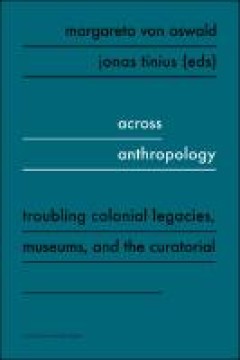
Across anthropology: troubling colonial legacies, museums and the curatorial
How can we rethink anthropology beyond itself? In this book, twenty-one artists, anthropologists, and curators grapple with how anthropology has been formulated, thought, and practised ‘elsewhere’ and ‘otherwise’. They do so by unfolding ethnographic case studies from Belgium, France, Germany, Italy, the Netherlands, and Poland – and through conversations that expand these geographies…
- Edition
- -
- ISBN/ISSN
- 9789461663177
- Collation
- 434p.: ill.
- Series Title
- -
- Call Number
- 301 ACR a
 Computer Science, Information & General Works
Computer Science, Information & General Works  Philosophy & Psychology
Philosophy & Psychology  Religion
Religion  Social Sciences
Social Sciences  Language
Language  Pure Science
Pure Science  Applied Sciences
Applied Sciences  Art & Recreation
Art & Recreation  Literature
Literature  History & Geography
History & Geography